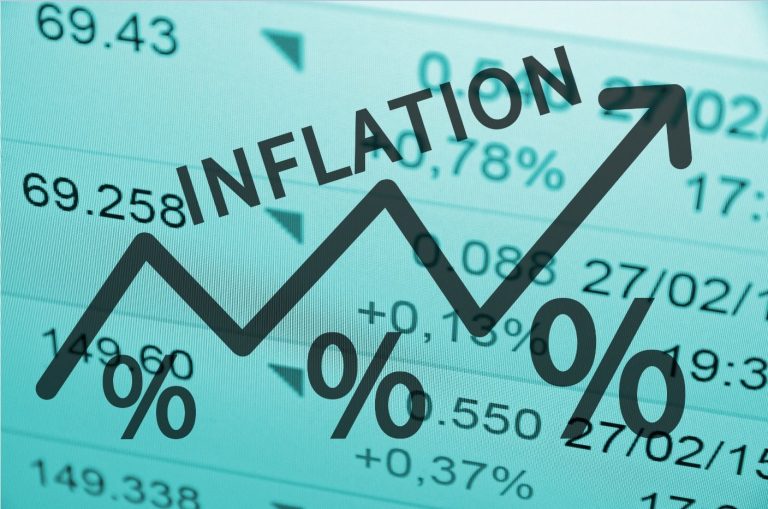European markets underwent a bit of a pause yesterday with a mixed finish, although the FTSE100 did manage to eke out a gain, hitting a two-week high as well as matching its best run of daily gains since mid-July.
US markets continued to track higher, with the Nasdaq 100 and S&P500 pushing further above their 50-day SMAs, with both closing at a two-week high, for their 4th day of gains.
As we look towards today’s European session, the focus today returns to inflation, and more importantly whether there is enough evidence to justify a pause in September from both the ECB as well as the Federal Reserve, as we get key flash inflation numbers from France, Italy, and the EU, as well as the latest core PCE inflation numbers for July from the US.
Over the course of the last few weeks there has been increasing evidence that the eurozone economy has been slowing sharply, with the recent flash PMIs showing sharp contractions in both manufacturing and the services sector. Other business surveys have also pointed to weakening economic activity although prices have also been slowing, taking some of the pressure off the ECB to continue to hike aggressively.
At the last ECB meeting President Lagarde suggested a pause might be appropriate at the September meeting, acknowledging that policy was starting to become restrictive. We’ve also seen some ECB policymakers acknowledging the risks of overtightening into an economic slowdown, while on the flip side head of the Bundesbank Joachim Nagel has insisted further rate hikes are likely.
Yesterday’s Germany and Spain flash CPI numbers for August highlight the ECB’s problem, with Spain CPI edging up in August to 2.4% with core CPI slowing modestly to 6.1%. Headline inflation in Germany only slowed modestly to 6.4% from 6.5%.
Today’s headline EU flash CPI numbers are therefore expected to be a key test for the ECB, when they meet on 14th September especially if they don’t slow as much as markets are pricing.
French CPI is expected to accelerate to 5.4% in August while Italy CPI is forecast to slow to 5.6%.
EU headline CPI is forecast to slow to 5.1% from 5.3%, with core prices expected to slow to 5.3% from 5.5%, although given the divergent nature of the various CPI readings of the big four eurozone economies there is a risk of an upside surprise.
The weaker than expected nature of this week’s US economic data has been good news for stock markets, as well as bond markets, in so far it has helped to reinforce market expectations that next month’s Fed meeting will see US policymakers vote to keep rates on hold.
A slowdown in job vacancies, a downgrade to US Q2 GDP and a weaker than expected ADP jobs report for August appears to show a US economy that is not too hot and not too cold.
Even before this week’s economic numbers the odds had already been leaning towards a Fed pause when the central bank meets in September, even if there is a concern that we might still see another rate hike later in the year.
These concerns over another rate hike are mainly down to the stickiness of core inflation which only recently prompted a sharp move higher in longer term rates, causing the US yield curve to steepen off its June lows.
The June Core PCE Deflator numbers did see a sharp fall from 4.6% in May to 4.1% in June, while the deflator fell to 3% from 3.8%.
Today’s July inflation numbers could prompt further concern about sticky inflation if we get a sizeable tick higher in the monthly, as well as annual headline numbers, reversing some of the decline in bond yields seen so far this week.
When we got the July CPI numbers earlier this month, we saw evidence that prices might struggle to move much lower, after headline CPI edged higher to 3.2%. This could translate into a similar move today with a move higher to 3.3% in the deflator, and to 4.2% in the PCE core deflator.
Personal spending is also expected to rise by 0.7% in July, up from 0.5% in June. Weekly jobless claims are expected to remain steady, up slightly to 235k.
EUR/USD – the rebound off the 1.0780 trend line support from the March lows continues to gain traction, pushing up to the 1.0950 area. We need to push through resistance at the 1.1030 area, to signal a return to the highs this year.
GBP/USD – another day of strong gains has seen the pound push back above the 1.2700 area. We need to push back through the 1.2800 area to diminish downside risk and a move towards 1.2400.
EUR/GBP – the failure to push through resistance at the 0.8620/30 area yesterday has seen the euro slip back towards the 0.8570/80 area. While the 50-day SMA caps the bias is for a retest of the lows.
USD/JPY – the 147.50 area remains a key resistance. This remains the key barrier for a move towards 150.00. Support comes in at last week’s lows at 144.50/60.
Disclaimer: CMC Markets is an execution-only service provider. The material (whether or not it states any opinions) is for general information purposes only, and does not take into account your personal circumstances or objectives. Nothing in this material is (or should be considered to be) financial, investment or other advice on which reliance should be placed. No opinion given in the material constitutes a recommendation by CMC Markets or the author that any particular investment, security, transaction or investment strategy is suitable for any specific person. The material has not been prepared in accordance with legal requirements designed to promote the independence of investment research. Although we are not specifically prevented from dealing before providing this material, we do not seek to take advantage of the material prior to its dissemination.

